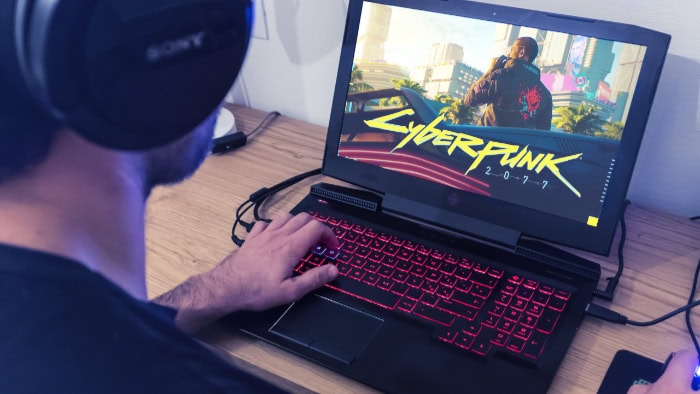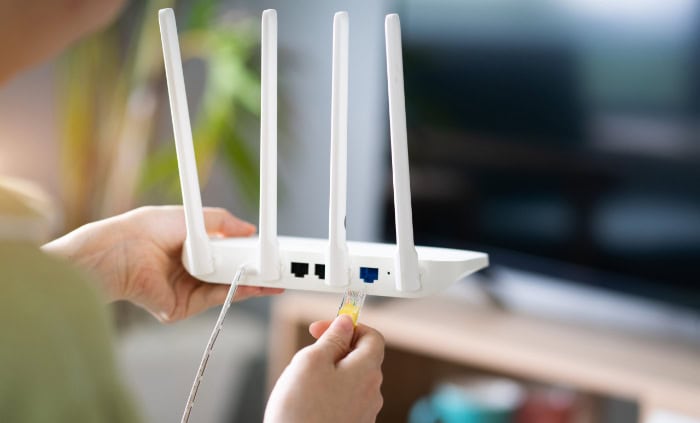Is 2.4GHz Good for Gaming? A Comprehensive Analysis

High-performance gaming isn’t just about powerful hardware and sharp reflexes—it’s also about having an internet connection that can keep up. Wireless networks have made gaming more convenient, but factors like speed, range, and stability can make or break your experience.
The 2.4GHz frequency, a common choice for many devices, promises extended coverage, but does it meet the demands of gaming?
Understanding 2.4GHz Technology
The 2.4GHz frequency band is one of the most widely used Wi-Fi spectrums, valued for its long-range capabilities and ability to penetrate walls and obstacles effectively. However, this frequency is not without its limitations, particularly when handling the demands of modern online gaming.
Frequency Basics
The 2.4GHz spectrum operates on a lower frequency compared to its 5GHz counterpart, which allows signals to travel further and penetrate physical barriers like walls and floors more effectively. This makes it a practical choice for setups located in larger homes or areas where the router and gaming devices are separated by multiple obstacles.
However, the greater range comes with a trade-off in speed and bandwidth.
With a bandwidth limitation of around 450 Mbps (on a standard 802.11n connection), 2.4GHz struggles to support high-speed connections when compared to the faster speeds offered by 5GHz. This can become particularly noticeable during activities like game downloads, large updates, or streaming high-quality content.
Additionally, 2.4GHz has only three non-overlapping channels, which can quickly become crowded in densely populated areas, leading to slower speeds and reduced stability.
Comparison to 5GHz
While 2.4GHz is better suited for long-range coverage and penetrating obstacles, its counterpart, 5GHz, shines in delivering faster speeds and lower latency for devices within a shorter radius from the router. Where 2.4GHz offers broader coverage, 5GHz typically supports speeds of up to 1,300 Mbps (depending on the router and setup), making it a more suitable option for high-bandwidth activities like online gaming, streaming, and video conferencing.
Latency is another area where 5GHz has a distinct advantage. The shorter wavelength allows it to experience less interference and congestion, which translates to a more responsive connection.
However, 5GHz’s shorter range and reduced ability to penetrate obstacles mean it may not be ideal for setups that require connectivity across multiple rooms or levels of a home.
Ultimately, the choice between 2.4GHz and 5GHz comes down to a balance of speed versus range. While 5GHz is optimal for performance near the router, 2.4GHz may be the better choice for those requiring extended coverage at the expense of cutting-edge speed.
Device Compatibility
Many gaming devices and peripherals still rely on the 2.4GHz band, particularly older consoles, wireless controllers, and accessories. Some devices, such as Nintendo Switch consoles or wireless gaming mice, are more likely to connect via 2.4GHz due to its stronger range and compatibility with older technologies.
Most modern routers and consoles, however, support dual-band functionality, giving users the option to switch between 2.4GHz and 5GHz as needed.
While 2.4GHz compatibility ensures that a wide range of devices can connect to Wi-Fi, increased traffic on this spectrum can lead to congestion, especially in households with smart devices, other gaming setups, and appliances such as microwaves that share the same frequency. Understanding which devices are better suited for 2.4GHz versus 5GHz can greatly improve overall network performance.
Gaming on 2.4GHz is viable in certain situations, particularly when range is more important than speed, but it has its limitations. Knowing the capabilities of this frequency and how it compares to alternatives is a crucial step in configuring the ideal gaming setup.
Performance Considerations for Gaming

Performance is one of the most critical aspects of any gaming setup, and the connection type you choose can significantly impact your experience. While the 2.4GHz frequency offers some notable benefits, its limitations in speed, latency, and interference can create challenges for gamers.
Latency Sensitivity
Latency remains a defining factor in online multiplayer gaming, where split-second reactions can mean the difference between victory and defeat. The 2.4GHz band is more prone to higher latency due to its susceptibility to interference and congestion.
In real-time games like first-person shooters, MOBAs, or battle royale titles, higher latency can manifest as delayed inputs, laggy connections, or desynchronized movements. These issues can disrupt the experience and leave players at a competitive disadvantage.
The 2.4GHz spectrum’s longer range is often its strength, but as distance grows, so does the risk of increased latency. Gamers playing in another room or on a different floor from the router may experience noticeable delays compared to those using a faster and more stable 5GHz connection.
While casual gaming may tolerate slight latency spikes, competitive players will likely find 2.4GHz inadequate for maintaining the responsiveness demanded in highly competitive settings.
Interference Risks
The 2.4GHz frequency is especially vulnerable to interference from household devices and overlapping Wi-Fi networks. Common appliances like microwaves, cordless phones, and Bluetooth devices all operate on this spectrum, increasing the likelihood of signal interruptions during gaming sessions.
In densely populated areas such as apartment complexes, the congestion caused by overlapping networks can further degrade the connection quality on 2.4GHz.
These interference issues can lead to unstable connections, packet loss, or sudden drops in speed. For gamers, this means disrupted matches, rubberbanding, and extended loading times.
Moving devices closer to the router or adjusting router settings to reduce channel overlap can mitigate some interference, but the 2.4GHz band’s susceptibility to congestion remains a fundamental drawback.
Practical Use Cases and Limitations

The 2.4GHz frequency can be a practical choice for gaming depending on the specific situation, but it has noticeable limitations. While its range and compatibility make it suitable for certain use cases, the trade-offs in speed, stability, and interference can pose significant challenges for others.
Acceptable Scenarios
For casual gamers or those who primarily enjoy single-player experiences, 2.4GHz may often perform well enough to meet their needs. Games that don’t rely heavily on fast-paced interactions or real-time multiplayer functionality, such as story-driven RPGs or simulation games, tend to be far less dependent on high-speed, low-latency connections.
In these cases, the extended range of 2.4GHz becomes an advantage, particularly if the gaming setup is located far from the router.
Long-range setups also benefit from the ability of 2.4GHz to penetrate walls and other obstacles more effectively than its 5GHz counterpart. For homes with multiple rooms or floors, 2.4GHz can provide more consistent coverage in areas where 5GHz signals may struggle to reach.
Additionally, players who game on handheld or portable consoles like the Nintendo Switch, which often connect to 2.4GHz by default, may not notice significant performance issues for local or lightweight online play.
Problematic Situations
Competitive gaming and high-demand multiplayer genres such as FPS titles, battle royales, and MMORPGs highlight the limitations of 2.4GHz Wi-Fi. These gaming experiences require a connection that delivers minimal latency, fast speeds, and reliable stability.
The tendency of 2.4GHz to experience higher latency and slower speeds can introduce input delays, gameplay interruptions, and other frustrating issues that may leave competitive gamers at a disadvantage.
High-device-count households present additional challenges as they tend to generate network congestion, especially on the 2.4GHz band. Smart home devices, streaming platforms, and other connected equipment can reduce available bandwidth, directly impacting gaming performance.
Crowded Wi-Fi environments, such as apartment buildings or densely populated neighborhoods, further exacerbate the problem by increasing interference from overlapping networks. In these cases, reliance on 2.4GHz can result in unstable connections that negatively affect both casual and serious gaming sessions.
Range vs. Stability Tradeoff
One of the biggest considerations for gamers using the 2.4GHz band is the tradeoff between range and stability. The frequency’s extended range makes it appealing for setups in larger homes or for devices located far from the router.
However, that range comes at the cost of reduced speed and susceptibility to external interference.
For gamers prioritizing stability over distance, a 5GHz connection or a wired Ethernet connection provides a more reliable and faster option. However, for those who are unable to connect via 5GHz due to distance or physical barriers, 2.4GHz may offer a workable solution, provided the gaming environment is optimized to reduce interference and device congestion.
Balancing these competing priorities is essential to ensuring a positive gaming experience, particularly in households with varying connectivity demands.
Optimizing 2.4GHz for Gaming

While the 2.4GHz frequency has its limitations, there are ways to improve its performance for gaming. Adjusting router settings, reducing interference, and knowing when to switch to other connection options can help gamers get the most out of their setup.
Router Configuration
Configuring a router correctly is one of the most effective ways to boost the performance of the 2.4GHz band. Quality of Service (QoS) settings, which prioritize specific devices or applications over others, can ensure your gaming device receives the necessary bandwidth.
Enabling QoS can reduce latency and interruptions during critical online multiplayer games.
Channel selection is another important step in optimizing 2.4GHz Wi-Fi. The frequency operates on channels that can overlap, leading to increased interference and slower speeds.
Choosing a less congested channel, often between 1, 6, or 11, can significantly improve stability and reduce latency. Most modern routers have channel scanning tools or automatic settings to help find the optimal channel for your environment.
Keeping router firmware updated is essential for maintaining performance and security. Manufacturers frequently release updates that improve functionality, fix bugs, and optimize network stability.
Regularly checking for updates ensures the router is equipped to handle the demands of gaming as efficiently as possible.
Environmental Adjustments
Physical placement of the router and gaming device plays a significant role in optimizing 2.4GHz performance. Positioning the router in an elevated and central location ensures stronger signal coverage throughout the home.
Walls, furniture, and electronic devices can obstruct or weaken the signal, so reducing physical barriers between the router and gaming setup should be a priority.
Monitoring network activity helps identify sources of interference. Appliances like microwaves, Bluetooth devices, and even other Wi-Fi-enabled gadgets can disrupt the 2.4GHz signal.
Minimizing the number of active devices on this frequency reduces competition for bandwidth and improves connection stability.
Using Wi-Fi monitoring tools or apps can help map out signal strength and interference across different areas, allowing gamers to better understand where the 2.4GHz connection performs best. Adjusting device placement based on these insights can lead to noticeable improvements.
When to Switch
For gamers seeking the best possible performance, knowing when to switch to alternative connection options is crucial. While 2.4GHz may suffice for casual play or single-player setups, competitive environments often demand faster and more reliable solutions.
Transitioning to the 5GHz band or newer technologies like Wi-Fi 6 or 6E can offer substantial upgrades in speed, stability, and reduced latency.
For critical gaming sessions, wired Ethernet remains the most dependable option. Unlike Wi-Fi, Ethernet eliminates interference entirely, delivering consistent speeds and ultra-low latency.
Using an Ethernet connection is especially recommended for competitive titles or scenarios where stability is paramount.
Gamers unsure of how 2.4GHz meets their needs can experiment with different connection options to determine what works best for their setup. Taking advantage of dual-band routers or investing in upgraded network equipment can provide flexibility to switch between frequencies depending on the situation.
Conclusion
The 2.4GHz frequency remains a practical but situational solution for gaming, offering its greatest advantages in range and compatibility. Its ability to penetrate walls and maintain connectivity over longer distances makes it a reliable option for setups where proximity to the router is limited.
However, its limitations in speed, latency, and susceptibility to interference can hinder performance in demanding gaming scenarios, particularly in competitive or multiplayer environments.
For gamers focused on performance, 5GHz or wired Ethernet connections should be prioritized. The faster speeds, lower latency, and enhanced stability of these options are better suited to the demands of competitive gaming, streaming-based services, and households with multiple connected devices.
Despite this, 2.4GHz can still fulfill gaming needs in constrained environments or for casual, single-player experiences, provided the network is optimized for stability.


